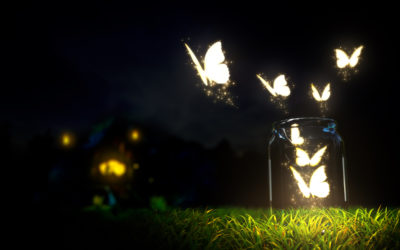Imagine you are suddenly standing in the middle of the Serengeti surrounded by unfamiliar trees and animals. As you look around you everything appears strange and you are more than slightly nervous. Now imagine that as you turn to look behind you, out of the corner of your eye you detect a slight movement and you know instantly that the King of the Jungle, Mr Lion himself is stalking you.
What will you do?
Every nerve ending in your body is alive, your heart is beating fast and you are struggling to catch your breath.
Your automatic response is to flee, to run as fast as you possibly can and hope that somehow you will outrun the danger.
Fast forward to today. You are safe and sound in your home but suddenly you feel jittery and anxious. Every nerve ending in your body is alive, your heart starts beating fast and you are struggling to catch your breath. You feel like you need to escape but there is no lion stalking you this time. And yet you feel like you are in danger …
The survival instinct that served our ancient ancestors is still alive and well within you. Just like the antelope and the deer have an inbuilt warning system that allows them to leap and run at the first sign of the lion’s presence, so we too needed the same to keep us safe.
The Chemistry Of Anxiety
You’ve probably heard of Adrenalin or Epinephrine – the hormone that is released in the body when we attempt a bungy-jump, a skydive, ride a roller coaster or when we stand at the top of the ski slope. Adrenalin is what causes your heart to speed up allowing you to take in more oxygen for the feat ahead. It is the chemical that makes you hyper focused on what is about to happen. It is designed to give you a quick ‘hit’ before disappearing as the threat of danger is reduced. Adrenalin junkies (a term for those who chase high risk sports and activities) enjoy the rush of this chemical in the same way that an addict gets ‘high’ on their chosen drug.
However, there is a second hormone which is released at the same time which takes longer to build up and longer to dissipate. Cortisol allows for sustained action should it be required and rather than giving you a quick high as Adrenalin does, it leaves you feeling ‘wrung out’ or anxious.
There are times even in our modern world when this ‘primitive’ alarm is activated, saving our lives or giving us the strength to save another. I remember a couple of occasions as a mother when one of my children had hurt themselves requiring immediate medical attention. In the moment of the event, I became calm, could think clearly and was able to take the appropriate action to ensure their safety. However, when the danger was over, thoughts of what could have happened started to lodge themselves in my mind. I suddenly felt exhausted and tearful needing to rest and recover. This is an example of the cycle of Adrenalin (the emergency button) and Cortisol, the slow releasing safety valve.
Most of the time we are perfectly safe in the ‘civilised’ world we have created. And yet, deep within us this primordial risk assessing system is till working to ensure our safety. It will respond to a threat or feeling of risk in exactly the same way as if you were about to be chased by that lion of ages past.
Your body responds to stress in the same way it would if you were being chased by a lion
We talk about stress as if it is something ‘out there’ but in reality your response to what happens out there determines your personal ability to deal with what we call stress. Some people seem to sail through life with minimal symptoms of stress whereas others are almost paralysed by a constant feeling of overwhelm. And for some people, a particular event or series of events are so painful that they develop long term anxiety which impacts every area of their life until they no longer feel joy or happiness.
When we feel pressured, the same primitive ‘flight or fight’ response that we needed so long ago to survive, is triggered. Adrenaline and Cortisol flood our body causing symptoms that we now refer to as ‘anxiety’. These can include sweating, hyper focus, shallow breathing and a quicker than usual heart beat. In some cases these symptoms can be mistaken for a heart attack, so severe can they appear.
But when you are in no real danger, why do you feel the need to flee? Why is every nerve ending alive and ready for action?And why is your heart beating as if it wants to escape from your chest?
The truth is that most of the ‘danger’ we perceive is provided by our thoughts.
We don’t know what the future will hold so we tell ourselves a ‘worst case scenario’ story. We feel rejected by someone and our sense of self worth drops leaving us feeling vulnerable. Or we place so much importance on another’s opinion of us that we become afraid to be ourselves.
“Most of the things we worry about never happen”
There are a myriad of circumstances that may elicit symptoms of stress. And if we focus on the outcomes we are most afraid of, we will perpetuate the cycle of hormone release such that the constant see-saw of symptoms eventually destroys the natural fall of Cortisol leaving us in a constant state of exhaustion, emotion and joylessness. For some people, a state of anxiety becomes their natural ‘default position’ and everything that happens around them becomes a threat. In such instances, specific strategies to ‘reset’ the normal pattern of hormone release are required for a return to wellness.
So what can you do when you feel those symptoms of anxiety rising in you?
Lets go back to our Serengeti moment with Mr Lion. Given that this is not your current reality, what can you learn from this scenario?
Imagine as you get that ‘need to flee’ feeling, that you are racing across the Serengeti and that Mr Lion is adrenalin. Look behind you and you will see that the Lion you believe is chasing you is actually a part of yourself.
Why would you be afraid of yourself?
Remind yourself that you are perfectly safe and slow down to catch your breath. Turn to face Mr Lion as he too slows to a casual walk before becoming smaller and smaller. Instead of the fierce and terrifying Lion you imagined was chasing you, there is nothing but a small kitten mewing quietly. Where in one moment you were afraid, now you feel compassion. You hold out your hand to your nemesis and gently encourage him to approach you. As you do so, your heart rate and breathing return to normal and you can see clearly again.
Take a moment to recognise the thoughts that were in your mind when you felt your anxiety rise and take a note for future reference. In most cases a pattern of thinking has been created by your responses to the events which occur around you and its these thought patterns which drive your anxiety. Your brain likes to categorise things so if one event elicits a particular response, then a similar event (or thought) will elicit the same response even if in fact it is very different.
The story of Mr Lion is a metaphor for your ability to short circuit any automatic anxiety which arises. It takes you from an emotional state where you can see nothing but problems into a logical one where you can discover solutions. Imprint this metaphor on your brain and become aware of your personal response to ‘stress’ so that you can recognise when that old primitive warning system has been switched on. With practice, you will learn new ways of responding to the events in your life, ways which are far more productive and allow you to step beyond your comfort zone without fear.




0 Comments